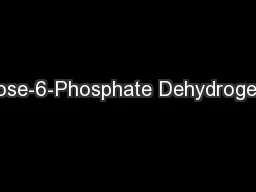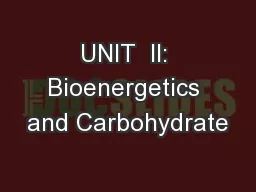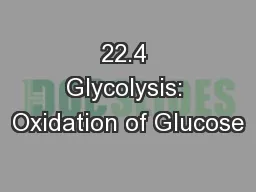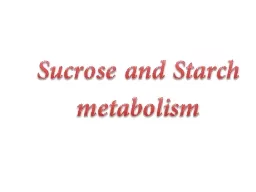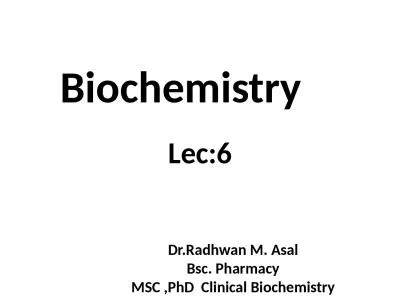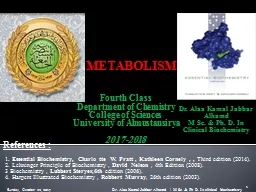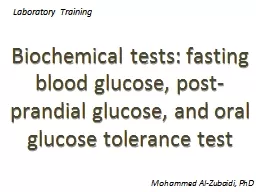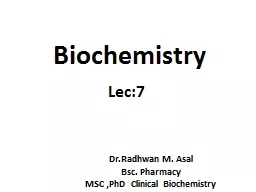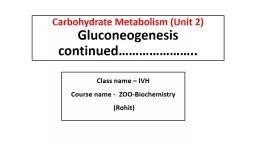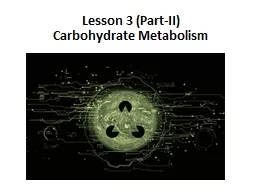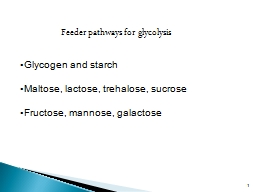PPT-Glucose-6-Phosphate Dehydrogenase
Author : liane-varnes | Published Date : 2017-05-20
Deficiency G6PDD The glycolytic pathway is the main source of energy ATP The hexose monophosphate shunt pathway provides the main source of reduced nicotinamide
Presentation Embed Code
Download Presentation
Download Presentation The PPT/PDF document "Glucose-6-Phosphate Dehydrogenase" is the property of its rightful owner. Permission is granted to download and print the materials on this website for personal, non-commercial use only, and to display it on your personal computer provided you do not modify the materials and that you retain all copyright notices contained in the materials. By downloading content from our website, you accept the terms of this agreement.
Glucose-6-Phosphate Dehydrogenase: Transcript
Deficiency G6PDD The glycolytic pathway is the main source of energy ATP The hexose monophosphate shunt pathway provides the main source of reduced nicotinamide adenine . Dehydrogenase. . (G-6-PD). Introduction. G6PD deficiency is an allelic abnormality which is inherited in an X-linked recessive fashion.. G6PD deficiency is also known as "favism" since G6PD deficient individuals are also sometimes allergic to . Maltose, lactose, . trehalose. , sucrose. Fructose, mannose, . galactose. Feeder pathways for . glycolysis. 2. Catabolism of cellular glycogen. Glycogen phosphorylase catalyzes an attack by Pi on the (. Introduction. Glucose remains the nearly universal and building block in modern organisms, from microbes to humans. In mammals, some tissues depend almost completely on glucose for their metabolic energy. . a. . . The . breakdown of large molecules involves catabolic reactions.. b. . . The . synthesis of large molecules involves anabolic reactions.. c. . . The . breakdown of sucrose to smaller molecules is a catabolic reaction.. Metabolism. Chapter 10: Gluconeogenesis. I. . OVERVIEW. Some tissues, such as the brain, red blood cells (RBCs), kidney medulla. , lens . and cornea of the eye, testes, and exercising muscle, require a . Glucose in the bloodstream enters our cells, where it undergoes degradation in a pathway called glycolysis. . Glucose obtained from the digestion of polysaccharides is degraded in glycolysis to pyruvate.. Sucrose…. is . a nonreducing disaccharide . .. composed . of . GLUCOSE. and. FRUCTOSE . linked via their anomeric . carbons.. is . synthesized . in the . cytosol. of plant . cells.. is synthesized from . M. . Asal. Bsc. . Pharmacy. MSC ,PhD Clinical . Biochemistry. Glycogen Metabolism . The . main stores of glycogen in the body are found in skeletal muscle and liver, although most other cells store small amounts of glycogen . College of Sciences. University of . Almustansirya. 2017-2018. Dr. Alaa Kamal Jabbar Alhamd. M Sc. & Ph. D. In Clinical Biochemistry. References :. . . 1. . Essential Biochemistry, . Charlo. Mohammed Al-. Zubaidi. , . PhD. Laboratory Training. Introduction. The blood glucose level is the amount of glucose present in the blood. . The body naturally tightly regulates blood glucose levels as a part of metabolic homeostasis.. M. . Asal. Bsc. . Pharmacy. MSC ,PhD Clinical . Biochemistry. Gluconeogenesis. SUBSTRATES . FOR GLUCONEOGENESIS . Gluconeogenic precursors are molecules that can be used to produce a net synthesis of glucose. They include all the intermediates of glycolysis and the citric acid cycle. Glycerol, lactate, and the α-. Gluconeogenesis continued…………………... Class name – IVH. Course name - ZOO-Biochemistry. (Rohit). Overview of Gluconeogenesis. First step (. Conversion of Pyruvate to Phosphoenolpyruvate. FATE OF . PYRUVATE. MADE FROM GLYCOLYSIS. FATE OF . PYRUVATE. MADE FROM GLYCOLYSIS. Lactic . acid fermentation occurs in muscle cells when oxygen is in low . supply.. Human Lactate . dehydrogenase . trehalose. , sucrose. Fructose, mannose, . galactose. Feeder pathways for . glycolysis. 2. Catabolism of cellular glycogen. Glycogen phosphorylase catalyzes an attack by Pi on the (. a. 1. →. 4) glycosidic linkage that joins the last two glucose residues at a nonreducing end, generating glucose 1-phosphate and a polymer one glucose unit shorter..
Download Document
Here is the link to download the presentation.
"Glucose-6-Phosphate Dehydrogenase"The content belongs to its owner. You may download and print it for personal use, without modification, and keep all copyright notices. By downloading, you agree to these terms.
Related Documents

